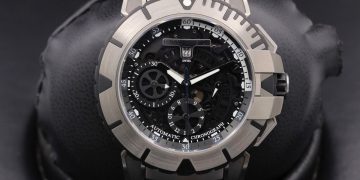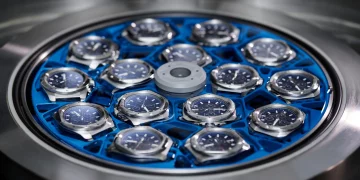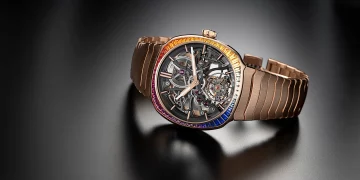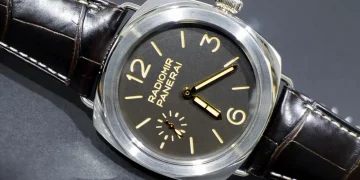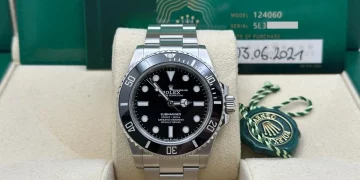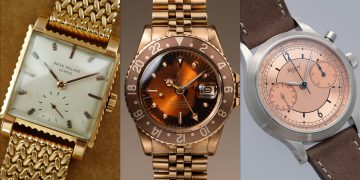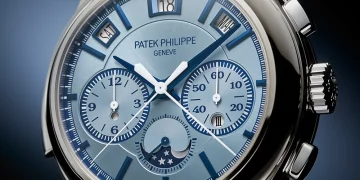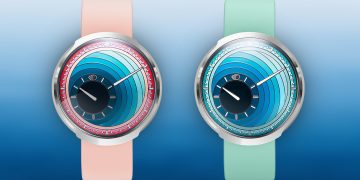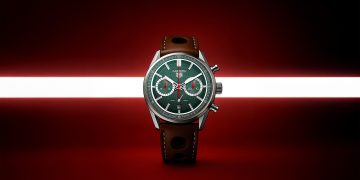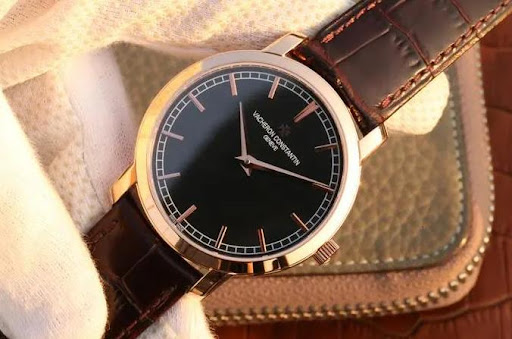Introduction
The watchmaking industry has evolved significantly over the past centuries, with craftsmanship, design, and technology always at the forefront of innovation. However, in recent decades, the influence of high-tech materials has sparked a revolution in the world of horology. The use of advanced materials such as ceramics, titanium, carbon fiber, and even cutting-edge alloys is enabling watchmakers to push the boundaries of traditional craftsmanship while ensuring improved performance, durability, and aesthetics.
High-tech materials are shaping the future of watchmaking in multiple ways. These materials allow for lighter, stronger, and more precise timepieces that meet the demands of modern lifestyles while maintaining the heritage of luxury watchmaking. As a result, high-tech materials are not just transforming the way watches are built—they are redefining what a luxury timepiece can be.
In this article, we will explore how these high-tech materials have impacted the design, construction, and performance of watches. We will analyze their role in improving durability, enhancing aesthetic appeal, and pushing the limits of mechanical and quartz movements. Additionally, we will examine the interplay between traditional watchmaking techniques and the introduction of modern materials, and how this fusion is shaping the future of horology.
1. The Advent of High-Tech Materials in Watchmaking
1.1 The Role of Traditional Materials in Watchmaking
- Historical Overview: Traditional materials such as stainless steel, gold, and leather have long been the foundation of watchmaking. They provided a balance of elegance, durability, and functionality.
- Limitations of Traditional Materials: While these materials were suitable for the time, their properties—such as weight, susceptibility to scratches, and wear—presented challenges that high-tech materials sought to overcome.
1.2 The Emergence of High-Tech Materials
- The Pioneering Use of Ceramics: Discuss how ceramics became an industry standard. The use of ceramic in watch cases, especially in high-end watches, has revolutionized the industry by offering greater scratch resistance, a lightweight feel, and a sleek, modern appearance.
- Titanium’s Rise: Titanium’s strength and lightweight properties have made it an attractive choice for brands like Omega, Panerai, and others. Its corrosion resistance and hypoallergenic qualities made it the material of choice for sports and diving watches.
- Carbon Fiber and Its Role in Modern Timepieces: Explore the use of carbon fiber in luxury watchmaking. Carbon fiber is favored for its extreme lightness and toughness, as well as its contemporary appearance, making it ideal for sports-oriented watches.
2. Benefits of High-Tech Materials in Watchmaking
2.1 Durability and Resistance
- Scratch Resistance: One of the primary advantages of high-tech materials is their enhanced durability, particularly their resistance to scratches and other forms of damage. Ceramics, in particular, are renowned for their superior hardness, which makes them far more resistant to wear than traditional metals.
- Corrosion and Oxidation Resistance: Materials like titanium and ceramic are highly resistant to corrosion and oxidation, which makes them ideal for watches that are subjected to harsh environments, including diving, extreme weather conditions, or exposure to chemicals.
- Impact Resistance: Carbon fiber, titanium, and certain specialized alloys offer excellent impact resistance, ensuring the longevity of the watch even under rough usage.
2.2 Lightweight and Comfort
- Comfort of Wear: The lightweight nature of materials like titanium and ceramic enhances the comfort of wearing the watch for extended periods. These materials offer a significant advantage over traditional metals, which may feel heavy on the wrist.
- Effortless Wearability: High-tech materials also contribute to the overall balance of the timepiece, making them easier to wear without feeling cumbersome.
2.3 Precision Engineering and Performance
- Thermal Stability and Precision: High-tech materials, especially advanced alloys and ceramics, exhibit superior thermal stability. This ensures that the watch’s mechanical components operate more reliably, regardless of the external temperature.
- Improved Movement Efficiency: Certain high-tech materials, such as specialized alloys, can improve the efficiency of the watch movement by reducing friction in critical components like the escapement, reducing the wear and tear on the mechanism over time.
3. Aesthetic Innovation Through Advanced Materials
3.1 A Modern and Futuristic Look
- Ceramic and Titanium’s Contemporary Appeal: Explore how materials like ceramic and titanium are helping watchmakers create modern, sleek, and futuristic designs that appeal to today’s consumers. Discuss their matte or polished finishes and the versatile color palettes that are possible with these materials.
- Incorporating Carbon Fiber: Carbon fiber is particularly valued in the sports watch sector, where its dynamic patterns and high-tech look have captured the attention of both collectors and enthusiasts.
- Innovative Finishes and Techniques: High-tech materials often come with new opportunities for finishing techniques. Watches made of ceramic, for example, can be polished to a glossy finish or left matte, providing a wide range of aesthetic possibilities.
3.2 Unique Color Palettes and Customization
- Variety of Colors: High-tech materials like ceramic allow watchmakers to create timepieces in a range of vibrant colors and finishes. For example, many luxury brands now produce ceramic watches in shades of blue, white, black, and even more exotic tones like rose gold or green.
- Customization Options: Some brands offer limited-edition versions of their watches, which may include unique color combinations or materials that are not available in mass-produced models.
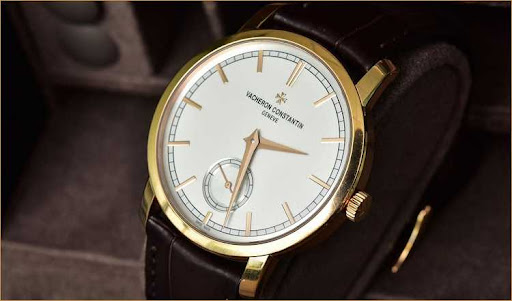
4. The Intersection of Tradition and Modernity
4.1 Combining High-Tech Materials with Classic Craftsmanship
- Mechanical Movements and High-Tech Cases: While mechanical watch movements have remained largely unchanged for centuries, the incorporation of high-tech materials in the case and components demonstrates the blending of old-world craftsmanship with new-world innovations. For example, while the movement inside may still be crafted using traditional methods, the case may incorporate cutting-edge materials to enhance durability and appearance.
- Preserving Watchmaking Heritage: High-tech materials are not replacing traditional techniques; instead, they complement them. Brands are integrating modern materials while still adhering to the craftsmanship principles that have made luxury watches desirable for centuries.
4.2 The Watchmaker’s Challenge
- Design Challenges: While high-tech materials offer many advantages, they also present challenges for watchmakers. The difficulty of machining certain materials, such as ceramics and carbon fiber, requires advanced technology and precision that may be unfamiliar to traditional watchmakers.
- Balancing Innovation and Tradition: Watchmakers must balance the use of new materials with respect for the heritage of the brand. Maintaining the brand’s identity while incorporating futuristic materials requires thoughtful design and craftsmanship.
5. Future Trends: What’s Next for High-Tech Materials in Watchmaking?
5.1 The Role of Sustainability in Material Choices
- Eco-Friendly Materials: With the growing concern for sustainability, watchmakers are looking at more eco-friendly materials that do not sacrifice performance. Biocompatible materials and recycled metals may play a role in the future of high-tech watchmaking.
- Green Technologies and Their Integration: Green technologies, such as solar-powered watches and recyclable materials, are becoming increasingly important. Brands like Seiko have already integrated solar-powered quartz movements into their watches, while others explore sustainable production methods.
5.2 Advancements in Material Science
- Nanotechnology and Future Materials: Looking toward the future, advancements in material science, such as nanotechnology, may revolutionize the watchmaking industry once again. New materials may be developed that offer even greater strength, lighter weight, or improved performance.
- Composite Materials: Watchmakers may continue experimenting with hybrid materials, combining the best properties of different substances to create ultra-light, highly durable, and unique timepieces.
5.3 Integration with Smart Watch Technology
- Smart Watches and Traditional Materials: As the smartwatch market continues to grow, watchmakers are investigating how high-tech materials can be used to improve the function, longevity, and design of smartwatches, while retaining the luxury feel and style of mechanical watches.
6. Conclusion
The use of high-tech materials in watchmaking has opened up new frontiers in terms of design, performance, and durability. By incorporating materials such as ceramics, titanium, and carbon fiber, watchmakers are not only enhancing the functionality and longevity of their timepieces but also creating watches that are lighter, stronger, and more visually striking than ever before.
These materials allow for greater precision, reduced wear and tear, and increased comfort, while also contributing to the aesthetic appeal of modern watches. The fusion of traditional watchmaking techniques with innovative materials ensures that luxury watches continue to evolve while maintaining their timeless craftsmanship. The future of horology is undoubtedly tied to the development of new materials, and watchmakers are poised to continue pushing the boundaries of what’s possible, creating timepieces that are both functional works of art and symbols of modern innovation.



